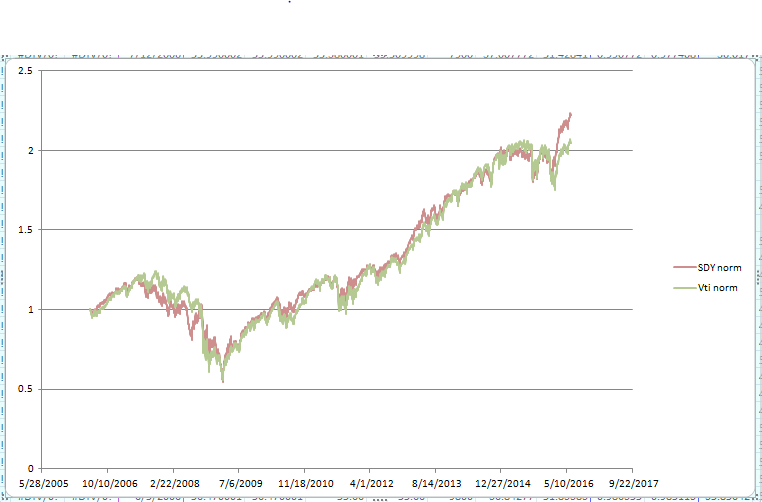NW-Bound
Give me a museum and I'll fill it. (Picasso) Give me a forum ...
- Joined
- Jul 3, 2008
- Messages
- 35,712
The difference is in whether dividends are included or not. Charts on many Web sites show only the share prices, and not total returns.
I use Morningstar when looking for total returns with dividends reinvested. And it says that over the last 10 years, the annualized return of SDY is 8.46%, and that of VTI is 7.74%.
I use Morningstar when looking for total returns with dividends reinvested. And it says that over the last 10 years, the annualized return of SDY is 8.46%, and that of VTI is 7.74%.

